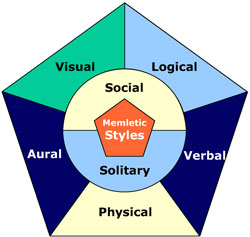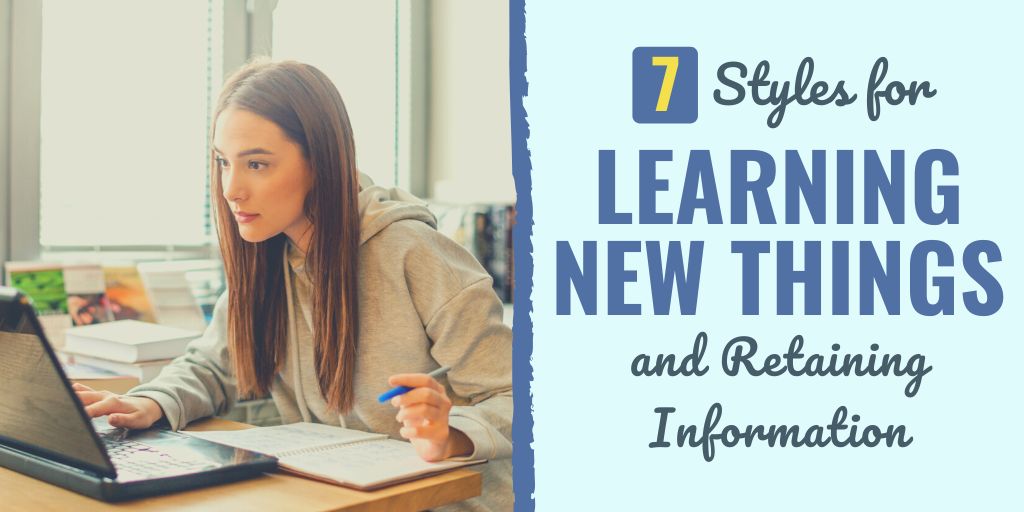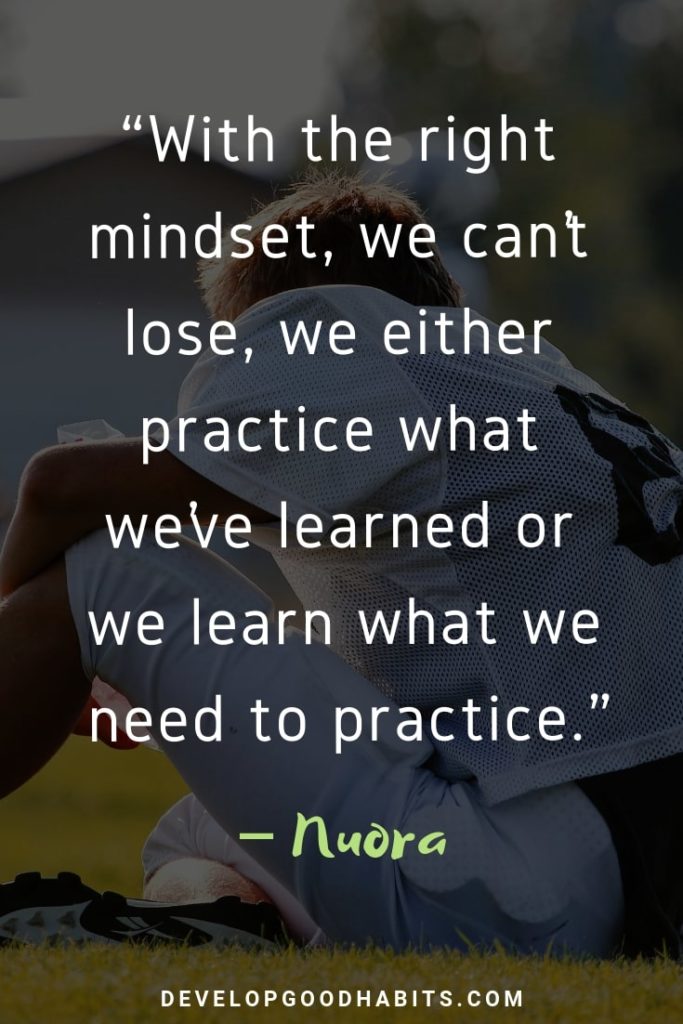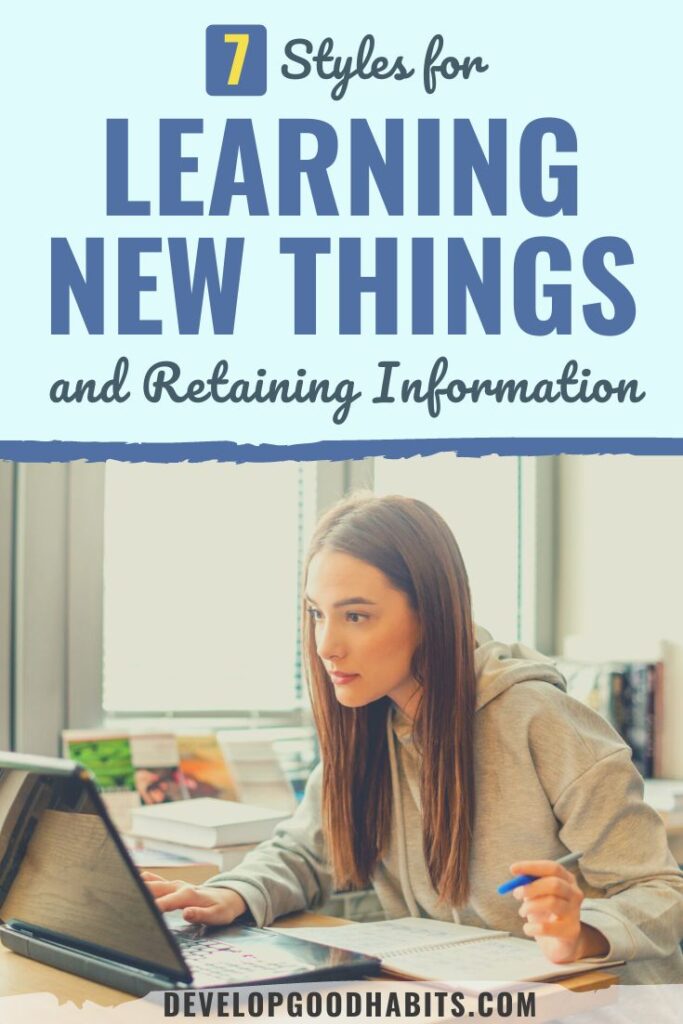There might be affiliate links on this page, which means we get a small commission of anything you buy. As an Amazon Associate we earn from qualifying purchases. Please do your own research before making any online purchase.
Have you ever struggled to learn something new?
People of all ages often have difficulties with learning new things.
Everyone has memories of struggling in school over their least favorite subjects, but academic struggles are definitely not the end of the road. Even many adults routinely struggle to pick up new skills at their jobs or just in daily life.
In fact, learning new things, has become a constant in the business world. You can never rest on your laurels. The business world today and beyond requires you to keep hustling & learning.
The video below explores 10 of the most powerful mind tricks you can use to learn anything fast. With just a few simple tweaks to your learning approach, you'll be able to pick up new skills in no time.
Many people fear trying to learn new things. They think that learning is too difficult combined with the pressures of work and life.
The challenge here is many people don't understand THEIR natural strengths when it comes to learning a new skill or task. Some folks prefer the written word, while others prefer a more hands-on approach.
So, if you can identify your preferred learning style, then this information will save you a tremendous amount of time, money and headaches.
In this article, I'll go over the 7 styles of learning and how to implement this information whenever you want to pick up that next skill.
Let's get to it…
The Challenge of Learning New Things
Why is learning sometimes so hard?
Why do some people seem to pick up things so easily while the rest of us toil for hours, days or years to learn the same thing?
The truth is it all comes down to how you learn.
Often, there isn't a one-size-fits-all answer to learning styles. The vast majority of people fit multiple styles to various degrees.
It's a lot like personality types. Nobody is 100 percent a certain way all the time. Everyone fits somewhere along a spectrum of strengths and weaknesses that may change a little over time or in certain situations.
This is where an in-depth understanding your learning profile comes into play.
Knowing exactly where you fit on the spectrum can go a long way in guiding you toward the best learning approach for any given skill or situation.
Once you know your learning style, you can apply this knowledge whenever you're trying to pick up a new skill. So let's talk about the differences between these seven learning styles.
The Different Learning Styles
Let's talk about just what I mean by learning styles. The best way to discover your particular set of styles is to take an appropriate quiz such as the one found at Learning Styles Online.
If you've ever taken a personality test, then you will be somewhat familiar with how this works. It's not complicated, and it's worth investing 30 minutes of time to complete
The key here is to not overthink your answers. Just choose the most natural or initial response that pops into your head.
The following infographic can be used as a quick reference whenever you feel confused about the differences between each of the seven learning styles.
Now let's get into the nitty gritty of these seven learning styles…
If you've already taken the quiz above, then you have an idea of where you fall on the spectrum of learning styles. You can now use the information here to help you make the best use of this valuable information.
It is also important to realize how these styles work together depending on the type of learning taking place. No matter where you fall on the spectrum, certain activities may lend themselves to a certain type of learning.
By being fully aware of all the styles, you can make the best use of all of them to suit whatever learning challenge you are facing.
Remember there is not bad or good learning style. Every method has distinct advantages and disadvantages that work for certain types of people.
So don't agonize over your “type” or even worse, don't try to change how you prefer to learn to a style that's not comfortable to you. .
The Basic Levels of Learning
Although there are seven distinct learning styles, they tend to fall on two different levels. For those visual learners, the following graphic can help you understand this.

As you can see, the solitary and social styles appear to be within the other five. This is because most people are either social or solitary and then dominant in one or two of the other five styles.
The two levels of style are synergistic, so it's important for you to pay close attention to how they fit together.
The Seven Learning Styles
1. Social Learning Style
As you might guess from the title, the social learning style works best in groups and thrives on interaction with other people.
These are people that always want to be part of a group and rarely if ever want to do a project solo. They think best when they can share ideas and perspectives with others and see their responses.
They tend to remember information better when they have shared it with other people compared to repeating it to themselves.
The best way for them to deepen their knowledge of something is to discuss it. Social learners may not be keenly aware of their own thinking, and they will rely on feedback in order to refine and structure their ideas.
It's also vital for those with this learning style to have a strong connection and relationship with a mentor, tutor or teacher. They are definitely people that prefer to be taught rather than trying to assimilate information on their own.
If someone with this learning style is struggling, getting them a dedicated tutor they can connect with can help by leaps and bounds.
2. Solitary Learning Style
Opposite the social learning style is the solitary style. These are independent thinkers who work better alone than in groups.
They are especially skilled at being aware of their own thinking and processing their own thoughts. They generally do not need, or want, any other perspective, and they generally do not need to discuss their ideas in order to refine them. They are able to go through this process on their own.
This style generally needs less help from teacher or tutors. They are often able to assimilate whatever information they need from resources available like books or videos.
The best way to help this learning style is to give them easy access to as much information as possible and then give them the time and space they need to work through it.
It can sometimes be difficult to gauge the progress of a solitary learner because so much of what they are doing is going on inside their own head.
It's vital that this type be left uninterrupted until they choose to actively seek help. A solitary learner should seek a private and quiet place such as their own room or office.
It's important for solitary learners to have a clear vision or plan and find the proper motivation. Since this motivation must come from within, it's important for solitary learners to be fully aware of it and remind themselves of it often.
This can be as simple as posting reminders, creating a goal chart or keeping a progress journal.
3. The Visual/Spatial Style
This type is all about pictures, images and visualization. They communicate ideas by showing them in diagrams and charts. They also tend to need these visual representations to make sense of information.
Visual/spatial learners will remember certain things first such as faces, the appearance of objects, colors and the appearance of maps, but they may forget names of people or places and sounds.
This type of learner style must see what they are doing or learning about in order to understand it. They will definitely want to write down the names of people or places they need to remember.
They may struggle in lecture classes unless the instructor also makes extensive use of presentations or written notes.
They may also a want to take notes as much as possible. Remember, notes don't have to be words. They can just as easily be pictures, models or graphs.
A visual learner should strive to find videos or other visual representations of a concept. YouTube (and other online video education sites) will probably be their best friend. If forced to use books, they should strive for books with plenty of pictures, diagrams or other models.
The key strength of this learning type is the ability to create clear pictures and presentations in their heads. They are often able to very clearly see the outcome of a situation or project or imagine what things will look like after changes are made.
4. The Aural/Auditory Style
This learning style must use sound, music, rhythm and other auditory stimuli to process information.
They rely on their ears as opposed to their eyes and will thrive when they can hear the information provided to them. They will probably perform best in a lecture classroom or with a teacher skilled at talking about and describing the information.
They will want to make use of recordings and songs whenever possible. It will be more productive for an auditory learner to record a lesson and play it back for themselves multiple times rather than trying to take written notes or review books.
They may also wish to turn information into songs or find such songs, especially when trying to memorize material such as names or dates.
Rhythm and rhyme are very powerful tools for auditory learners. If they put something to a beat or pattern or use some kind of mnemonic rhyming device, this can greatly benefit them.
If they are also social, they may benefit greatly from active discussion and conversation about a topic.
If solitary, they may wish to have a self-discussion in which they record themselves talking through information and then playing it back. Solitary auditory learners may talk to themselves a lot.
5. The Verbal/Linguistic Style
This style is all about words, whether written or spoken. This style tends to align with either the visual or auditory style, but not both.
It's distinct from the auditory style in that a verbal learner may prefer written words or reading as opposed to listening or talking.
This type of learner will be a skilled reader and will rapidly be able to process written information. They will generally not need any outside help such as from pictures, songs or discussions in order to understand written information.
By the same token, they will need this written information and will not remember ideas as clearly from videos or pictures.
A linguistic style will probably benefit from taking extensive written notes that they can review later. They tend to love lists and sequences involving letters or words.
Vocabulary will be a powerful foundation for linguistic learners. When tackling a new idea, they will want to focus on the meanings of any new words as a starting place for exploring concepts.
They will tend to thrive when giving written assessment or essay opportunities where they can fully and deeply explore and explain their ideas in linguistic form.
A verbal learner's tendency to prefer written or spoken information depends greatly on where they fall in the visual or auditory areas. A strong verbal and auditory learner may prefer giving a speech or presentation as opposed to a written essay, for example.
6. The Physical/Bodily-Kinesthetic Style
These learners have a very strong mind-to-body connection. Their thinking is often mirrored in their movements, and they must move in order to think clearly.
They have a terrible time being desk-bound, so they are far more likely to be labeled ADD or ADHD even when they do not have any such disorder.
They tend to struggle in formal classroom settings more than the other types, and they may also struggle at jobs that keep them doing desk or computer-based work without frequent breaks.
When forced to do desk-based learning, this style can benefit from having something around them to keep them moving or allowing them to get out some physical energy.
This may include sitting on a therapy ball instead of a traditional chair or having a small squishy ball close at hand to work with at their desk. These learners often appear physically distracted or restless because they are always moving, but they are actually more focused this way.
This type of learner assimilates information by touching it, feeling it and working it with their hands. This can make them especially skilled at sports, crafts such as pottery, or subjects like science that can easily be made hands-on.
They tend to have a far more difficult time with abstract ideas, such as those in English and math, which cannot as easily be put into a physical representation.
Any opportunity this type of learner has to get up and move around is beneficial. If they can act out information in a skit or play active games to review, this can greatly help.
They may want to stand or walk around when learning. If they are doing something such as reading that requires them to sit and focus, then they will need frequent body breaks to get up and move around.
They may make use of body movements or other physical representations to remember ideas, and they may want to pair various concepts with a physical action.
This may look a lot like sign language where words and concepts are represented by a physical action with the hands or body. This is especially true when learning abstract concepts like new words and vocabulary.
This is a do-it-yourself or hands-on learning type. Simply seeing or hearing descriptions of a concept is not good enough. Bodily-kinesthetic learners need to perform the actions themselves before they will understand a concept.
A teacher can carefully guide students with this style by giving them short steps and then having them repeat those steps themselves multiple times before moving on.
If working by yourself, try to break information down into short, easy-to-practice steps. Use physical objects you can touch and feel as much as possible. When tackling abstract ideas, try to find or create a physical model or manipulative tool.
Often overlooked, and especially if the learner is also visual or linguistic, is the ability to draw or write. These are physical activities. Where simply reading or sitting and listen to information may be torture, actively drawing it or writing it down, even if just copying word-for-word from a source, may be engaging and useful.
Paying attention to your physical body is very important if you are a kinesthetic learner. They are far more sensitive to the feel of their environment than other learners. Temperature extremes or uncomfortable chairs or positions will bother them far more.
They may also want to take extra steps to stay relaxed and focused, such as with yoga or breathing techniques. (Reason why, even if virtual learning has its benefits, it may not be ideal for kinesthetic learners.)
7. The Logical/Mathematical Style
This learning style thrives on reasoning, logic, sequence and predictability. Obviously, they tend to be more skilled with mathematics, but strength in this learning style can really be adapted to any subject once properly understood.
The key to his learning style is reasoning and tinkering. A logical style really wants to understand the how and why of something as opposed to just how to do it. Once they understand in detail why it works, they will be far more likely to understand and remember how it works and what to do.
This means a logical learner needs plenty of time to fully investigate and tinker with a concept. Rushing them through many different processes or subjects or brushing only the surface level of concepts is the worst approach.
Equally important is order and structure. These are very ordered and organized learners, and they need this organization in order to make sense of concepts. This will mean carefully analyzing and grouping information into types and categories.
They will need to clearly define all of the steps in a process and understand why each step is necessary. Everything they do should be systematic and purposeful. An upfront plan, outline and goal are vital.
Patterns are a particular area of strength for this learning type. If they can see relationships and predictability in concepts, they will learn those concepts much faster and retain them better. If visual, they may want to create diagrams or charts to show the relationships and groupings within a concept.
Mentally stimulating or strategic games are another area of strength for logical learners. This is a learning style that benefits tremendously from simulation and in-depth activities.
In the modern day, they will probably be heavily drawn toward electronic sources of these games and activities such as computers and tablets. If social, they may also enjoy playing these games in groups and with friends.
A key problem these learners often have is overthinking or overanalyzing a problem. They spend all their time thinking and rationalizing but never actually move toward their goal.
While logical learners tend to take more time with subjects, it is important to strike this balance between time invested and learning gained.
Refocusing on goals and end-value is very important, and logical thinkers can train themselves to be disciplined self-checkers by setting strict, measurable and timed goals and plans.
Final Thoughts on Learning New Things
Understanding your particular place on the spectrum of learning styles can greatly benefit your ability to learn new information and skills.
Now that know the basics of each style, you need to tailor the way you learn things in order to maximize your strengths and minimize your weaknesses.
It's best to understand how you learn before beginning the learning process. No matter what age you are, you can still make use of this information or help someone else.
And if you're looking to discover more about how to retain what you learn, be sure to check out these articles:




